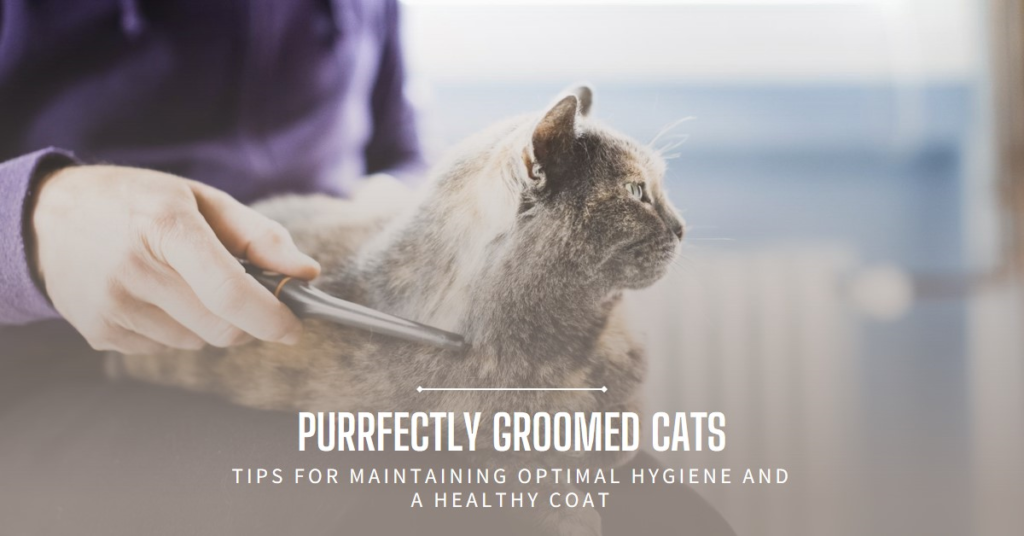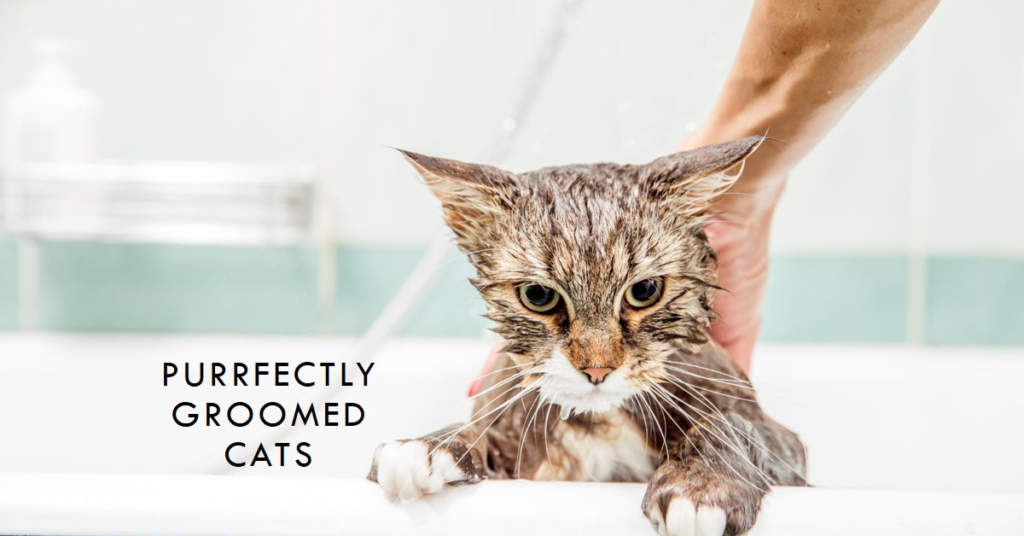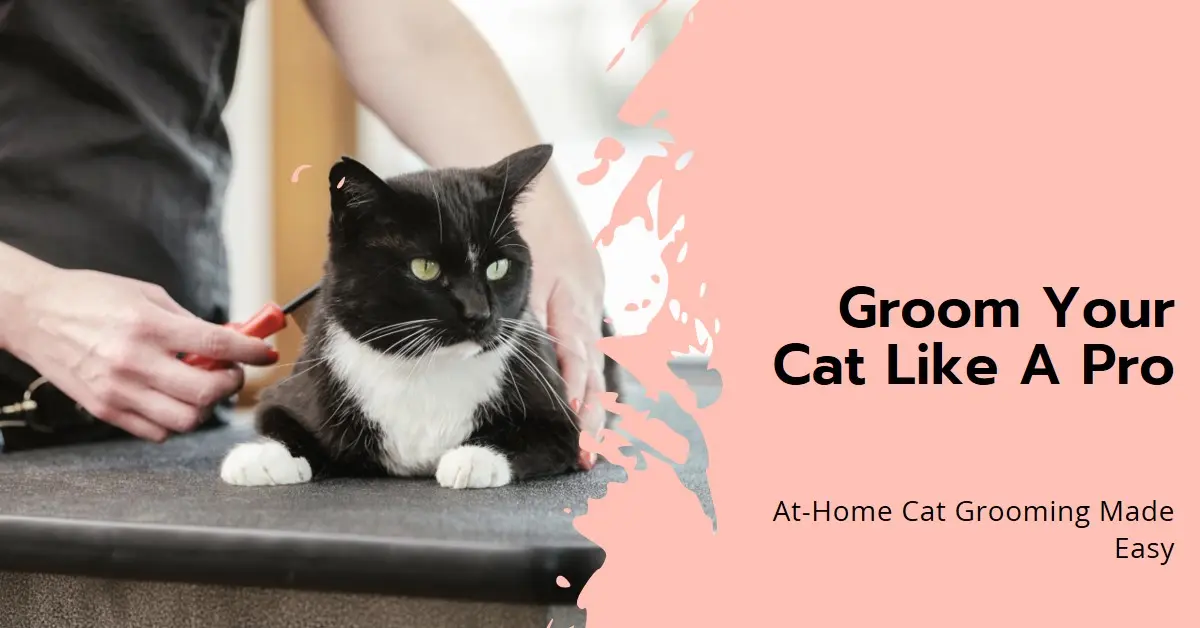Cats are known for their meticulous grooming habits, spending hours licking their fur to keep it clean and debris-free. However, even these naturally clean creatures can benefit from a helping hand from their human companions when it comes to maintaining optimal hygiene and a healthy coat. Regular Cat grooming ideas at home enhance their appearance and play a crucial role in their overall well-being. It’s also a great way to bond with your feline friend.
Here are the top 10 cat grooming ideas you can do at home:
1. Brush Regularly: Brushing your cat regularly is the most important part of their grooming routine. It helps to remove loose fur, prevent matting, and distribute natural oils throughout their coat. The type of brush you use will depend on your cat’s coat length and type. Cat grooming tools for short-haired cats, a rubber curry brush is a good option. For long-haired cats, a slicker brush or a comb is better.
2. Bathe Occasionally: Most cats don’t need to be bathed often, but sometimes it’s necessary. If your cat gets dirty or has a skin condition, you may need to wash them more frequently. Use a specific brand of cat shampoo that is specifically designed for cats. Avoid using human shampoo, which can be too harsh for their skin.
3. Trim Nails: Cats’ nails grow continuously, so it’s important to trim cat nails regularly to prevent them from becoming overgrown and uncomfortable. You can use either human nail clippers or cat nail clippers. Be sure to cut only the tip of the nail, avoiding the quick, pink part of the nail that contains blood vessels and nerves.
4. Clean Ears: Cats’ ears can get dirty, especially if they have floppy ears. Cleaning cat ears with a cotton ball or a soft cloth dampened with warm water. Do not use cotton swabs, which can damage the delicate ear canal.
5. Wipe Eyes: Cats’ eyes can also get crusty, especially if they have allergies. You can wipe their eyes with a cotton ball or a soft cloth dampened with warm water. Be sure to use a separate cloth for each eye to avoid spreading infection.
6. Check Teeth: Checking cat teeth can also develop plaque and tartar, leading to dental problems. You can brush your cat’s teeth with a toothbrush and toothpaste designed for cats. If your cat is uncomfortable with brushing their teeth, you can give them dental treats or chews that help reduce plaque and tartar buildup.
7. Provide a Scratching Post: Cats have a natural instinct to scratch, so it’s important to provide them with a scratching post. This will help to keep them from scratching your furniture. Many different types of scratching posts are available, so you can provide a cat scratching post that best suits your cat’s needs.
8. Keep Litter Box Clean: Cats are very particular about their litter box, so it’s important to keep it clean. Scoop the litter box daily and wash it with soap and water once a week. You should also change the litter completely every two to four weeks.
9. Monitor for Fleas and Ticks: Fleas and ticks can be a nuisance for cats and transmit diseases. It’s important to monitor cats for fleas and ticks. Check your cat regularly, especially if they spend time outdoors. Many different types of flea and tick prevention products are available, so talk to your veterinarian about which one is right for your cat.
10. Take Your Cat to the Vet for Regular Checkups: Regular veterinary checkups are crucial for all cats, even if they seem healthy. These visits allow your veterinarian to assess your cat’s overall health, detect potential problems early on, and ensure they’re up-to-date on their vaccinations.

What to Expect During a Checkup:
- Physical Examination: Your veterinarian will perform a thorough physical examination, checking your cat’s eyes, ears, nose, mouth, teeth, skin, coat, and lymph nodes. They’ll also listen to their heart and lungs and palpate their abdomen.
- Vaccinations: Vaccinations protect your cat from serious diseases such as rabies, feline leukemia (FeLV), and feline immunodeficiency virus (FIV). Your veterinarian will discuss your cat’s needs and recommend an appropriate vaccination schedule.
- Parasite Prevention: Internal and external parasites can significantly threaten your cat’s health. Your veterinarian will recommend appropriate parasite prevention medication based on your cat’s lifestyle and risk factors.
- Bloodwork and Urinalysis: These tests can provide valuable insights into your cat’s overall health and detect underlying conditions.
- Dental Care: Dental disease is a common problem in cats. Your veterinarian will examine your cat’s teeth and gums and recommend appropriate dental care, including cleaning and extractions.
Benefits of Regular Checkups
- Early Detection and Treatment:
Regular checkups allow your veterinarian to identify health problems early on when they’re often more treatable. This can significantly improve your cat’s prognosis and reduce the risk of complications.
- Preventive Care:
Vaccinations and parasite prevention are essential for protecting your cat from preventable diseases.
- Peace of Mind:
Knowing that your cat is healthy and receiving the best possible care can give you peace of mind.
- Frequency of Checkups:
The frequency of checkups will vary depending on your cat’s age, health status, and lifestyle. Generally, kittens should be seen by a veterinarian every 3-4 weeks until they’re fully vaccinated, adult cats should have annual checkups, and senior cats (over 7 years old) should be seen every 6 months.

Conclusion
Regular grooming is not just about aesthetics; it’s crucial to your cat’s overall health and happiness. By dedicating time to brushing, bathing, nail trimming, and other essential care practices, you’re enhancing their appearance, preventing potential health issues, fostering a stronger bond, and ensuring their overall well-being. A well-groomed cat is a contented cat, and a contented cat enriches your life with their playful antics and affectionate companionship.
Frequently Asked Questions
- How often should I brush my cat?
- Short-haired cats: 1-2 times per week
- Long-haired cats: Daily
- What type of brush should I use?
- Short-haired cats: Rubber curry brush
- Long-haired cats: Slicker brush or comb
- How often should I bathe my cat?
As needed (usually only a few times per year)
- How do I trim my cat’s nails?
- Use cat nail clippers or human nail clippers
- Trim only the tip of the nail, avoiding the quick
- What are some signs that my cat needs to be groomed?
- Excessive shedding
- Matted fur
- Dirty ears or eyes
- Bad breath
Also Read:


